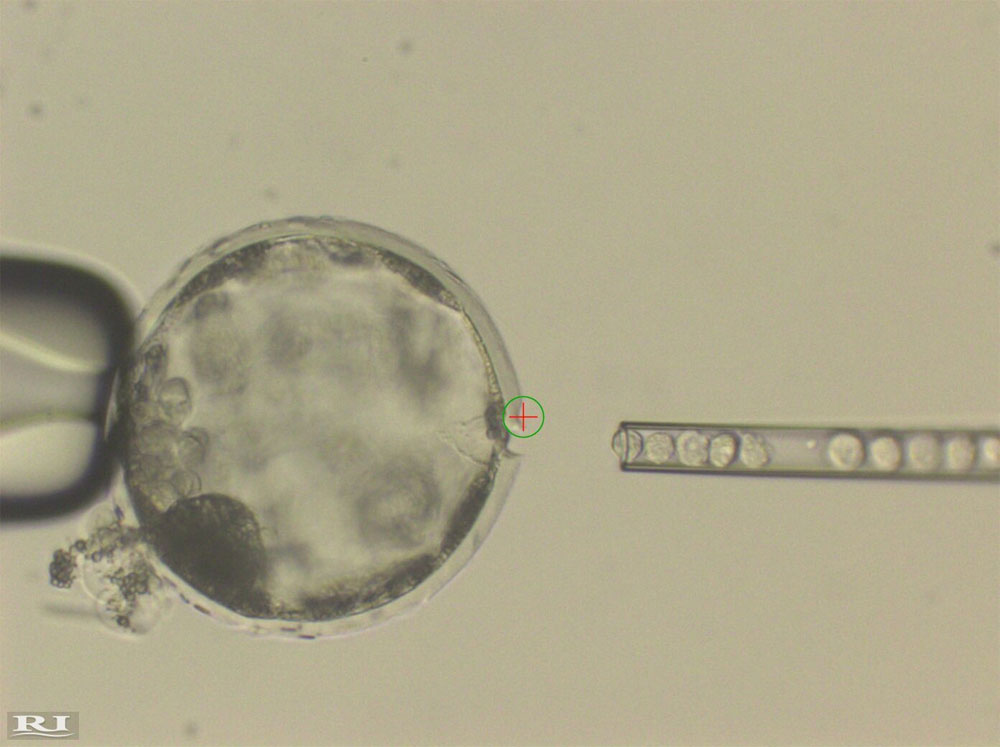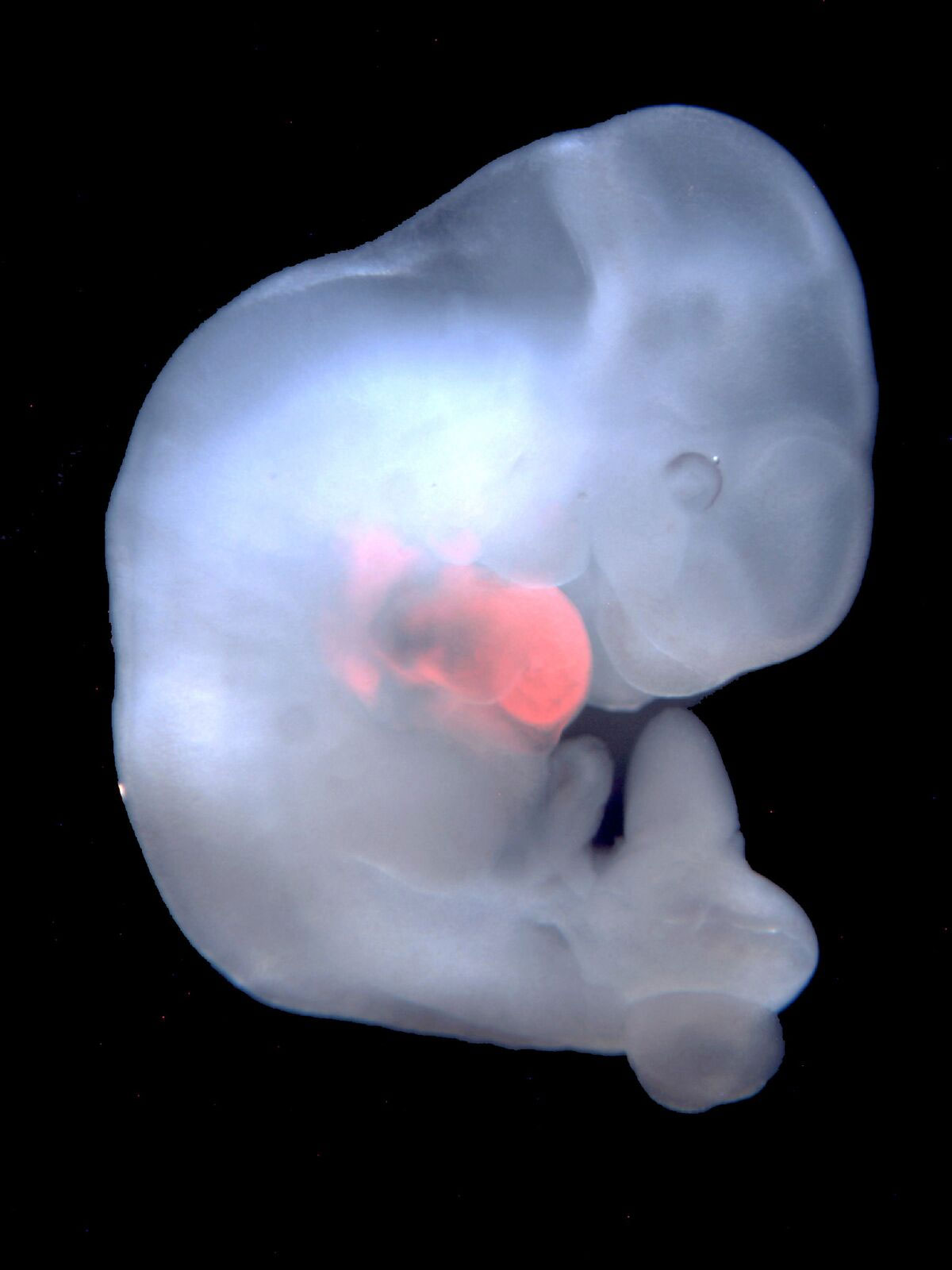Human-Pig Chimeras Created, Could One Day Aid in Organ Transplants

In experiments aimed at finding ways to grow new human organs inside animals, researchers recently succeeded in making embryos that contained both pig and human and pig cells.
These so-called human-pig chimeras (which contained only a small number of human cells) were allowed to develop for several weeks in female pigs before the pregnancies were terminated, according to a new study.
"The ultimate goal is to grow functional and transplantable tissue or organs, but we are far away from that," study researcher Juan Carlos Izpisua Belmonte, a professor at the Salk Institute of Biological Studies' Gene Expression Laboratory in La Jolla, California, said in a statement. "This is an important first step."
Experiments using human-animal chimeras are controversial, but last summer, the U.S. government said it planned to lift a ban on the use of federal funding for such research. Supporters of the research have also said that human-animal chimeras could lead to better ways of studying early human development and human diseases, as well improved methods for testing new drugs against certain conditions. [3 Human Chimeras That Already Exist]
Human-animal chimeras
A chimera is a single organism that consists of cells from two or more individuals — that is, it contains two sets of DNA, with the code to make two separate organisms, somewhere within it. In the case of the human-animal chimerasmade in the new research, the embryos contained mostly animal cells, with a relatively small number of human cells. To create the embryos, researchers injected human stem cells into animal embryos at an early stage of development.
In the new study, the researchers started by experimenting with rodents, to see if they could create mice that contained some rat cells. The researchers injected rat stem cells into mouse embryos and found that the embryos indeed developed into mice with rat cells present in organs throughout the body, including in the pancreas, kidneys, lungs and heart. Overall, the rat cells made up a small portion of the cells in the various organs, typically less than 10 percent, while the mouse cells made up the rest.
Interestingly, the researchers noted, they also found rat cells in the mice's gallbladders, even though rats don't have gallbladders themselves. The ancestors of modern rats stopped developing gallbladders over 18 million years ago, when rats diverged evolutionarily from mice. This finding suggests that rats do, in theory, have the ability to generate gall bladders, but the genetic program to carry out this development has been suppressed in these animals, the researchers said.
Get the world’s most fascinating discoveries delivered straight to your inbox.
Next, the researchers tried deleting certain genes in the mouse embryos, including genes that were critical for making the heart, pancreas and eyes. This time, when the scientists introduced the rat stem cells, the rats cells were able to make up for these deletions, so the mice still developed these organs. [11 Body Parts Grown in the Lab]
Experiments in pigs
The researchers then moved on to using pig embryos and human stem cells. The scientists used cells called human induced pluripotent stem cells, which are "adult" cells that have been reprogrammed so that they resemble cells in early development; they have the potential to form any tissue in the body. Still, even these induced pluripotent stem cells go through various stages of development, and one of the challenges in these experiments was figuring out which form of the stem cells would survive best in the pig embryos, the investigators said.
The researchers ultimately found that an "intermediate" form of these stem cells grew best within the pig embryos. The scientists implanted the chimera embryos in sows, and allowed the embryos to develop for three to four weeks.
Although the researchers detected human cells in the pig embryos, the human cells contributed only a very small fraction of the total cells in these embryos. But this could be considered good news, the researchers said; some people have been concerned that human-animal chimeras could be "too human," particularly if the human cells contributed to an animal's brain.
In the new study, however, the human cells did not become precursors to brain cells; instead, they started developing into muscle cells and cells in other organs, the researchers said.
The next step in the research will be to figure out a way guide the human cells into forming a particular human organ within the pig, Izpisua Belmonte said.
The study is published today (Jan. 26) in the journal Cell.
Yesterday, a separate group of researchers also reported that they created rat-mouse chimeras, and were able to grow functional mouse pancreases within the bodies of rats.
Original article on Live Science.

Rachael is a Live Science contributor, and was a former channel editor and senior writer for Live Science between 2010 and 2022. She has a master's degree in journalism from New York University's Science, Health and Environmental Reporting Program. She also holds a B.S. in molecular biology and an M.S. in biology from the University of California, San Diego. Her work has appeared in Scienceline, The Washington Post and Scientific American.




